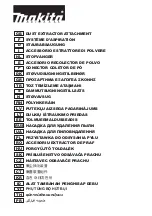
55
Start-up
11. Changing
tariff
settings
Here, you can enter information on possible time dif-
ferences in electricity prices, in line with your tariff.
e
Choose whether the tariff changes within a given
period.
🡆
Further information can be entered, depending
on your chosen settings.
Option
Explanation
Static
tariff
The electricity price does not
change at different times.
e
Price per kWh
: Enter your
agreed electricity price
per kilowatt hour.
Variable
tariff
The electricity price varies at
different times.
e
Press
Yes
to select this
variation (seasonal, days
of the week, times of
day) and define the time
intervals and their elec-
tricity prices per kilowatt
hour.
e
If necessary, create and
set further intervals.
Feed-in remu-
neration
e
Enter remuneration if
electricity is fed into the
grid.
12. Optimised charging
Overload protection
Using current sensors, the energy manager is in-
formed about currents and so protects the fuses
of your domestic installation from overload. Current
sensors on the house connection only protect the
main fuses. We therefore recommend additional cur-
rent sensors (not included in the scope of delivery)
on the leads of the sub-distribution boards, which are
used for EEBus devices such as chargers. Overload
protection is triggered if the rated current of a fuse
is exceeded. In this case, the charging current is
synchronously reduced in all phases. The maximum
charging current is based on the minimum permitted
charging current limit on all phases. If the minimum
charging current is not reached (this may happen
with specific vehicles), charging is interrupted and
does not automatically resume. If several chargers
are used at the place of use, we recommend let-
ting the energy manager coordinate the charging
processes. The energy distribution principle of the
energy manager offers the following options.
Option
Explanation
Balanced
The available charging
power is distributed be-
tween all charging vehicles
as evenly as possible.
Chronological
The charger that starts
charging first is prioritised
in energy distribution.
Individual
The first EEBus device on
the list is prioritised in en-
ergy distribution.
Option
Explanation
e
To change the order
of priority, drag devi-
ces to the desired po-
sition.
Information
If several charging processes are taking place simul-
taneously, energy is distributed in accordance with
the option selected here.
Information
Update: Phase-individual reduction
In future, Porsche vehicles supplied with an energy
manager will allow phase-individual reduction of the
charging current. The minimum charging current
limit will then be much lower, and a reduction will
no longer interrupt the charging process.
Own consumption optimisation
The function is disabled as standard.
e
Enable the function using the switch.
If this function is enabled, the vehicle can decide
whether it continues the charging process using en-
ergy provided by the photovoltaic system after the
minimum charge has been reached. Until the min-
imum charge is reached (stated as a percentage
of battery capacity), the vehicle is charged at the
maximum possible power (unless limited by overload
protection). After this, charging is optimised, i.e. the
vehicle only charges if power is available from the
photovoltaic system that would otherwise be fed as
excess into the power grid.
Summary of Contents for Home Energy Manager
Page 78: ...76 Index Setup 52 64 WPS Function 50 64 WPS Function 50 52 60 64 ...
Page 118: ...116 Index alphabétique V Vue d ensemble des raccordements d appareils 82 83 ...
Page 379: ...377 Stikordsoversigt Æ Ændring af valuta 365 ...
Page 456: ...454 Ευρετήριο E Ethernet Ρύθμιση 425 Σύνδεση 425 427 H Hotspot Ρύθμιση 441 Σύνδεση 424 436 ...
Page 530: ...528 Betűrendes névmutató Leválasztás 515 WPS funkció 501 515 WPS funkció 501 503 511 515 ...
Page 605: ...603 Kazalo Ž Žarišna točka Postavljanje 591 Spajanje 576 587 ...
Page 824: ...822 Satura rādītājs Vadīšana 809 WPS funkcija 796 809 WPS funkcija 796 798 806 809 ...
















































